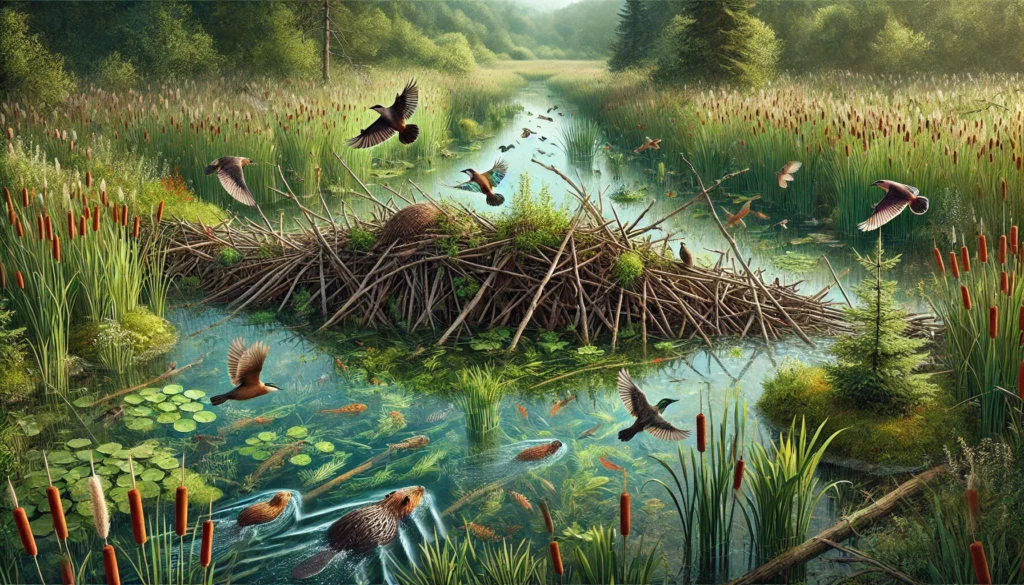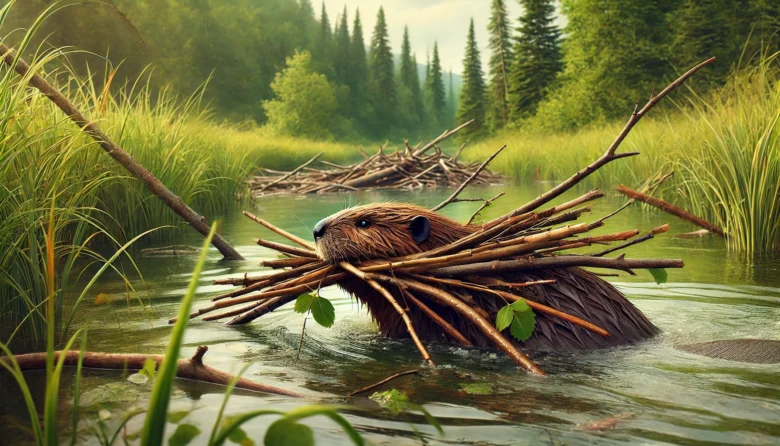Imagine a small animal with big teeth that can change landscapes, create wetlands, and support various wildlife species. Yes, we are talking about beavers! While beavers are not native to India, understanding their role as ecosystem engineers can inspire us to appreciate and protect our wildlife. Beavers are incredible creatures that play a crucial role in maintaining healthy ecosystems.
What Are Ecosystem Engineers?
Ecosystem engineers are organisms that create, modify, or maintain habitats. Their actions significantly impact the ecosystem’s structure and function. Beavers are one of the most famous examples of ecosystem engineers. Their activities, like building dams and creating ponds, benefit the environment in many ways.
How to Do Beavers Engineer Ecosystems?
Beavers are known for their ability to build dams using branches, mud, and stones. These dams slow water flow in rivers and streams, creating ponds and wetlands. Here’s how their engineering works:
Dam Building: Beavers build dams to create a still, deep-water habitat that provides them with protection from predators and access to food. Damming streams and rivers leads to the formation of ponds.
Creating Wetlands: The ponds created by beaver dams become wetlands essential for various plant and animal species.
Enhancing Biodiversity: Wetlands support a wide range of biodiversity, including fish, amphibians, birds, and plants.
Water Filtration: Beaver ponds help filter and purify water, trapping sediments and pollutants.
Groundwater Recharge: The ponds increase groundwater levels, which benefits surrounding vegetation and agriculture.

Ecological Benefits of Beavers
Beavers provide numerous ecological benefits that highlight their importance as ecosystem engineers:
1. Biodiversity Boosters: By creating wetlands, beavers provide habitats for many species. Birds, frogs, fish, and insects thrive in these new environments.
Example: In North America, beaver ponds have been found to support over 50% more bird species compared to areas without beavers.
2. Water Management: Beaver dams help regulate water flow, reducing the risk of floods during heavy rains and maintaining water levels during dry periods.
Example: Beavers have been used in some parts of the world to help manage water resources and mitigate the effects of droughts and floods.
3. Improving Water Quality: The wetlands created by beavers act as natural filters, improving water quality by trapping sediments and breaking down pollutants.
Example: Studies have shown that beaver ponds can remove up to 30% of nitrogen and phosphorus from the water, reducing the impact of agricultural runoff.
4. Climate Change Mitigation: Wetlands are carbon sinks, meaning they store carbon and help reduce greenhouse gases in the atmosphere. By creating wetlands, beavers contribute to carbon sequestration.
Example: A single beaver pond can store substantial amounts of carbon, helping to offset emissions from human activities.
5. Supporting Fisheries: Beaver ponds provide excellent habitats for fish, especially juvenile fish that need calm waters to grow.
Example: In some regions, the presence of beavers has been linked to healthier fish populations and improved fishing opportunities.
Practical Steps for Individuals
Everyone can contribute to protecting and restoring ecosystems, even if beavers are not part of our local fauna:
Plant Native Trees: Trees provide habitat and food for wildlife. Planting native species supports local biodiversity.
Reduce Water Pollution: Avoid using harmful chemicals in agriculture and gardening. Proper waste disposal prevents pollutants from entering water bodies.
Support Conservation Efforts: Join or donate to wildlife conservation and habitat restoration organizations.
Conclusion
Beavers are remarkable examples of how a single species can profoundly impact the environment. Their ability to create and maintain wetlands showcases the importance of ecosystem engineers in preserving biodiversity, improving water quality, and mitigating climate change. By drawing inspiration from beavers, we can better understand the significance of protecting and restoring ecosystems in India. Every effort counts towards creating a healthier planet for future generations.
Author’s Note
Thank you for reading! This blog has given you a new perspective on the ecological benefits of beavers and the importance of ecosystem engineers. Let’s work together to protect and restore our natural habitats. If you have any questions or thoughts, please share them in the comments below.
G.C., Ecosociosphere contributor.
References and Further Reading
- National Geographic – The Importance of Beavers
- World Wildlife Fund – Beavers as Ecosystem Engineers
- Governor Newsom’s Beaver Restoration Proposal – SLO Beaver Brigade. http://www.slobeaverbrigade.com/2022/05/16/governor-newsoms-beaver-restoration-proposal/
- Mysterud, A., Aaserud, R., Hansen, L. K., Åkra, K., Olberg, S., & Austrheim, G. (2010). Large herbivore grazing and invertebrates in an alpine ecosystem. Basic and Applied Ecology. https://doi.org/10.1016/j.baae.2010.02.009
- Razzaque, J. (2004). Trading Water: The Human Factor. Review of European Community and International Environmental Law. https://doi.org/10.1111/j.1467-9388.2004.00380.x
- Eco-Friendly Living: Stylish and Sustainable – Williamsburg Times. https://wbach.net/eco-friendly-living-stylish-and-sustainable/




